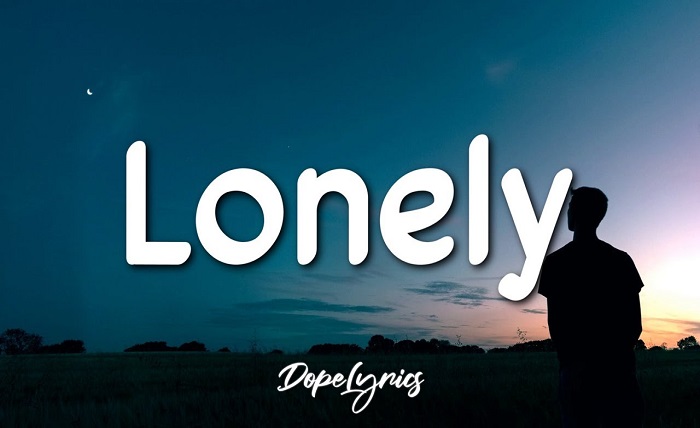Lonely Lyrics: How Music Can Express Our Feelings of Isolation

Music is a powerful form of art that can convey emotions, thoughts, and stories. Music can also help us cope with difficult situations, such as loneliness. Loneliness is a common and universal human experience that can affect anyone, regardless of age, gender, culture, or social status. Loneliness can have negative impacts on our mental and physical health, such as depression, anxiety, stress, insomnia, and cardiovascular problems. However, music can offer us some relief and comfort when we feel lonely. In this article, we will explore how music can express our feelings of isolation and how it can help us overcome loneliness.
Lonely Lyrics:
Lonely I’m so lonely,
I have nobody,
To call my owwnnn
Im so lonely, im mr. Lonely
I have nobody,
To call my owwnnn
Im so lonely,
Im so lonely (so lonely),
Im mr. Lonely (mr. Lonely)
I have nobody (I have nobody)
To call my own (to call my own) girl
I’m so lonely (so lonely)
I’m Mr. Lonely (Mr. Lonely)
I have nobody (I have nobody)
To call my own (to call my own) girl
I’m so lonely (so lonely)
I’m Mr. Lonely (Mr. Lonely)
I have nobody (I have nobody to call my own)
To call my own (to call my own) girl
I’m so lonely (so lonely)
I’m Mr. Lonely (Mr. Lonely)
I have nobody (I have nobody)
To call my own (to call my own) girl
Lonely Lyrics:
तुझसे दूर हूँ मैं भी मजबूर
दिल को सताए तेरी अंखियों का नूर
बात ये सच्ची आज तुझको बताऊँ
मुझे समझ नी आता कैसे दूरियां मिटाऊं
अस तेरे लिए मैं ये गीत लिखता जाऊं
दिन रात ही मैं इन्हें गुनगुनाऊं
फ़ोन में फोटो देखूं तेरी बारी बारी
जी करदा मैं आ जवां मार के उदारी
ओ बावरिया ओ बावरिया
मैं कितना तन्हा तन्हा लोनली लोनली तेरे बिन
ओ बावरिया
तेरी याद याद याद में
तेरी याद याद याद में
तेरी याद याद याद में तड़पे जिया
ओ बावरिया ओ बावरिया
मैं कितना तन्हा तन्हा लोनली लोनली तेरे बिन
ओ बावरिया
साँसों में आँखों में नींदों में तू ही तू
ओ बावरिया
तेरी याद याद याद में
तेरी याद याद याद में
तेरी याद याद याद में तड़पे जिया
ओ बावरिया ओ बावरिया
मैं कितना तन्हा तन्हा लोनली लोनली तेरे बिन
ओ बावरिया
जितना मैं भूलना चाहूँ
तेरी यादें ना दिल से जाती है
कोई ना कोई कनेक्शन है जो मेरी नींदों को
चुराती है
तेरी याद साथ है
तेरी याद साथ है
तेरी याद याद याद में
तेरी याद याद याद में
तेरी याद याद याद में तड़पे जिया
ओ बावरिया ओ बावरिया
मैं कितना तन्हा तन्हा लोनली लोनली तेरे बिन
ओ बावरिया
Read more Adiye lyrics: A Romantic Song from Bachelor
How Music Can Express Our Feelings of Isolation
Music can express our feelings of isolation in various ways, such as through lyrics, melodies, harmonies, rhythms, and genres. Lyrics are the words that are sung or spoken in a song. Lyrics can directly or indirectly describe the causes, effects, and solutions of loneliness. For example, the song “Lonely” by Justin Bieber and Benny Blanco depicts the singer’s struggles with fame and isolation since his childhood. The lyrics say: “Everybody knows my name now / But something ’bout it still feels strange / Like looking in a mirror, tryna steady yourself / And seeing somebody else / And everything is not the same now / It feels like all our lives have changed / Maybe when I’m older, it’ll all calm down / But it’s killing me now”. These lyrics show how the singer feels alienated from himself and others, and how he hopes for a better future.
Melodies are the sequences of notes that form the main musical theme of a song. Melodies can convey different moods and emotions depending on their pitch, contour, interval, and range. For example, a melody that has a low pitch, a descending contour, a large interval, and a narrow range can sound sad and lonely. A melody that has a high pitch, an ascending contour, a small interval, and a wide range can sound happy and cheerful. For example, the song “Lonely Day” by System of a Down has a melody that matches the first description. The melody is low-pitched, descending, large-intervalled, and narrow-ranged. The melody reflects the singer’s feelings of loneliness and despair.
Harmonies are the combinations of notes that are played or sung together to create chords. Harmonies can create different effects and atmospheres depending on their consonance or dissonance. Consonant harmonies are harmonies that sound pleasant and stable. Dissonant harmonies are harmonies that sound unpleasant and unstable. For example, the song “Hallelujah” by Leonard Cohen uses both consonant and dissonant harmonies to create contrast and tension. The song alternates between major and minor chords, which are consonant and dissonant respectively. The song also uses chromatic notes, which are notes that do not belong to the key of the song. The song expresses the singer’s feelings of loneliness and longing for love.
Rhythms are the patterns of beats and accents that create the tempo and meter of a song. Rhythms can influence our emotions and behaviors depending on their speed and complexity. Fast rhythms can make us feel excited and energetic. Slow rhythms can make us feel calm and relaxed. Complex rhythms can make us feel curious and intrigued. Simple rhythms can make us feel bored and dull. For example, the song “I’m So Lonesome I Could Cry” by Hank Williams has a slow and simple rhythm. The rhythm is slow-paced, steady, and predictable. The rhythm matches the singer’s feelings of loneliness and sadness.
Genres are the categories or styles of music that share common characteristics such as instrumentation, structure, history, culture, and audience. Genres can reflect our personalities and preferences depending on our tastes and moods. Some genres can be more associated with loneliness than others due to their themes or expressions. For example, blues is a genre that originated from African American communities in the 19th century as a way of expressing their hardships and sorrows. Blues songs often deal with topics such as love, loss, poverty, and oppression. Blues songs can make us feel lonely or empathize with others who are lonely.
How Music Can Help Us Overcome Loneliness
Music can help us overcome loneliness in various ways, such as through listening, singing, playing instruments, writing songs, and sharing music with others. Listening to music can help us cope with loneliness by providing us with entertainment, distraction, relaxation, catharsis, and identification. Entertainment is when we listen to music for fun or pleasure. Distraction is when we listen to music to divert our attention from our problems or negative emotions. Relaxation is when we listen to music to reduce our stress or anxiety. Catharsis is when we listen to music to release our pent-up feelings or emotions. Identification is when we listen to music to find comfort or connection with the artists or the lyrics.
Singing can help us cope with loneliness by improving our mood, self-esteem, confidence, and health. Mood is how we feel emotionally at a given moment. Self-esteem is how we value ourselves as a person. Confidence is how we trust ourselves and our abilities. Health is how we function physically and mentally. Singing can improve our mood by releasing endorphins, which are hormones that make us feel happy and euphoric. Singing can improve our self-esteem by enhancing our self-expression and creativity. Singing can improve our confidence by boosting our vocal skills and performance. Singing can improve our health by strengthening our immune system, respiratory system, cardiovascular system, and brain function.
Playing instruments can help us cope with loneliness by developing our cognitive, motor, social, and emotional skills. Cognitive skills are the mental processes that involve thinking, learning, remembering, and problem-solving. Motor skills are the physical movements that involve coordination, dexterity, and agility. Social skills are the interpersonal behaviors that involve communication, cooperation, and collaboration. Emotional skills are the affective abilities that involve awareness, regulation, and expression of emotions. Playing instruments can develop our cognitive skills by stimulating our brain activity and enhancing our memory, attention, and intelligence. Playing instruments can develop our motor skills by improving our hand-eye coordination and fine motor control. Playing instruments can develop our social skills by fostering our teamwork and leadership skills. Playing instruments can develop our emotional skills by increasing our emotional intelligence and empathy.
Writing songs can help us cope with loneliness by allowing us to process our thoughts, feelings, and experiences in a creative and constructive way. Writing songs can help us process our thoughts by organizing them into coherent and meaningful lyrics. Writing songs can help us process our feelings by expressing them through words and melodies. Writing songs can help us process our experiences by transforming them into stories and messages.
Sharing music with others can help us cope with loneliness by creating opportunities for social interaction, connection, and support. Social interaction is when we communicate or engage with other people. Connection is when we establish or maintain a relationship with other people. Support is when we receive or provide assistance or encouragement to other people. Sharing music with others can create opportunities for social interaction by initiating or joining conversations or activities related to music. Sharing music with others can create opportunities for connection by finding or forming common interests or bonds based on music. Sharing music with others can create opportunities for support by giving or receiving feedback or advice on music.
Conclusion
Music is a powerful form of art that can express our feelings of isolation and help us overcome loneliness. Music can express our feelings of isolation through lyrics, melodies, harmonies, rhythms, and genres. Music can help us overcome loneliness through listening, singing, playing instruments, writing songs, and sharing music with others. Music can be a source of comfort, joy, inspiration, and healing for us when we feel lonely. Music can also be a way of connecting with ourselves and others who share our feelings of loneliness. Music can make us feel less lonely and more alive.




